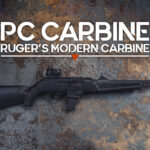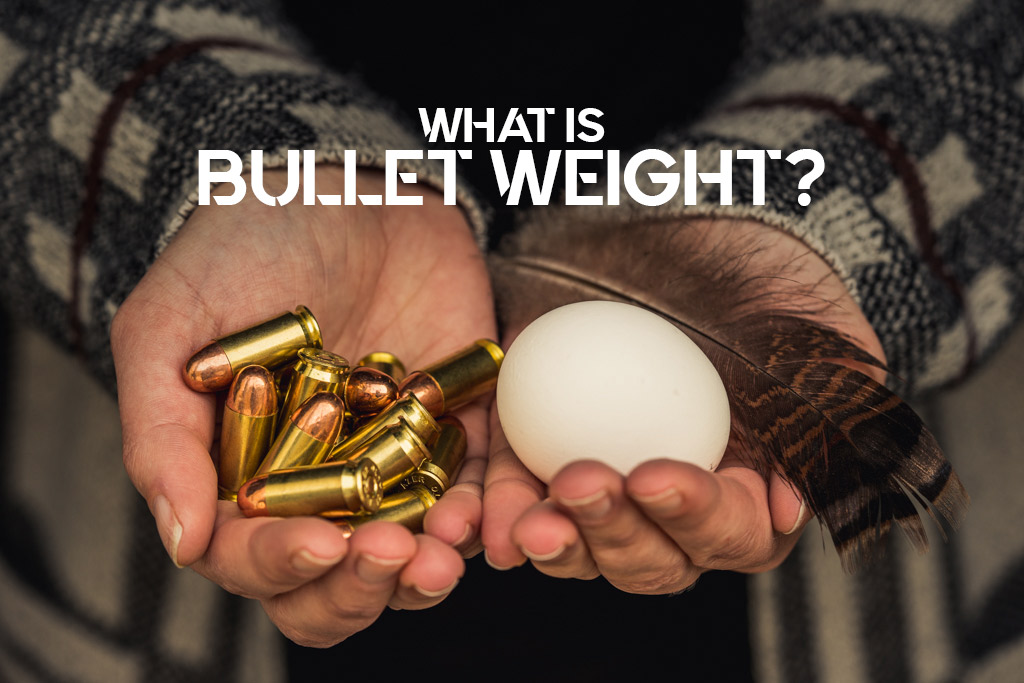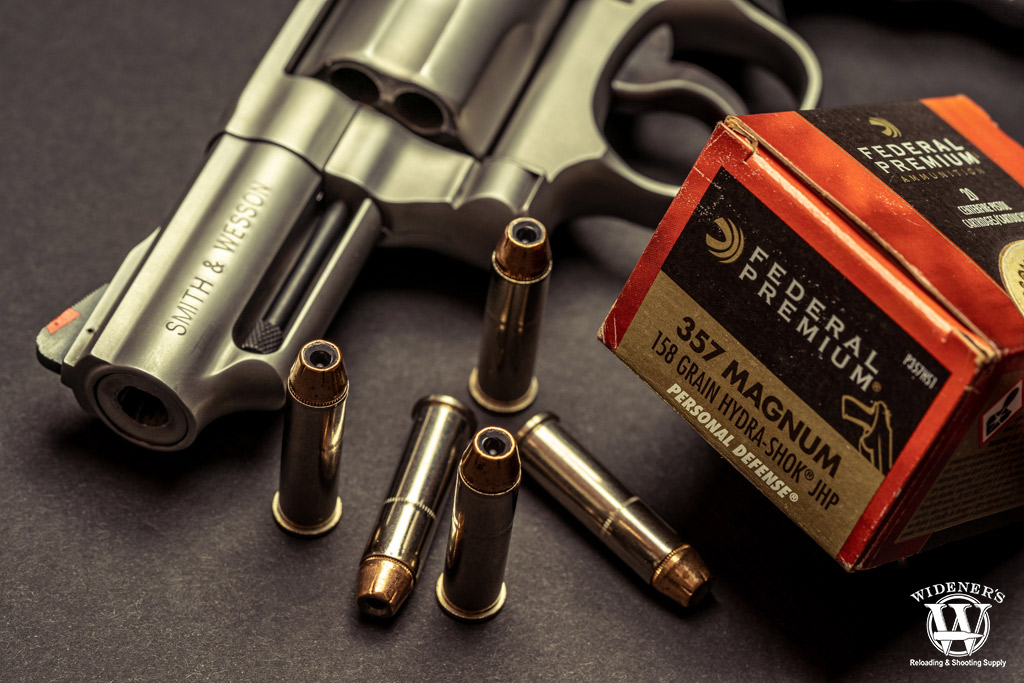

By Guy J. Sagi
Bullet weight is a critical component in the accuracy and performance of a firearm. The critical role it plays can be somewhat confusing for new shooters. Armed with a few simple facts you may be surprised how a few quick experiments during your next range session can bring out more of your firearm’s hidden potential.
We’re lucky. These days, reloading is no longer mandatory. It wasn’t long ago, if you wanted a specific load, you had to essentially make it yourself. Today, there’s no shortage of factory-loaded cartridges offering different weight bullets—with identical or nearly identical shapes and designs—available for sale. Widener’s offers a huge selection and, to help newcomers dial better into the options, we’ll start with a brief refresher on interpreting the information printed on commercially available ammunition.
What is Bullet Weight?
Put succinctly, bullet weight is how heavy the projectile leaving your firearm is. We typically measure bullet weight in units of measurement called “grains.” Lighter bullets typically move faster than heavier bullets. Each offers advantages and disadvantages when it comes to ballistic performance.
Interpreting The Ammo Box

What does it all mean? Deciphering the language used by ammo manufacturers can be difficult for beginners.
Experienced enthusiasts understand how to read the detailed information on boxes of factory ammunition. The critical details on the box include bullet weight. Unfortunately, many take their “second language” for granted after a few years and forget to share the translation with new shooters. Here are some keys to the alphanumeric code:
Do You Have The Right Ammo?
Running the wrong ammo in a firearm can have catastrophic consequences. So the specific cartridge comes first, usually in large and bold print—.223 Rem., .308 Win., 9 mm, .45 ACP, etc. Unfortunately, not all companies are fond of using same designation. You often find the cartridge used by the U.S. Military in its standard-issue sidearm listed as simply 9 mm or 9×19 mm. It can also take on a more Germanic label as 9 mm Luger or revive the Latin term for “prepare for war” with 9 Parabellum (even shortened to Para). Widener’s has pre-sorted its selection of factory ammunition to eliminate the potential for confusion on these and other cartridges, thankfully.
Understanding Bullet Weight

Most ammo manufacturers list the bullet caliber, type, and weight conveniently on the side of the packaging.
Bullet weight, reported in grains for the United States, comes next on the boxes in plain numbers. It’s followed by an abbreviated designation for the projectile’s design (FMJ for full metal jacket, HP for hollow point, etc.).
What is Grain?
To put things in perspective, it takes 437.5 grains to weigh a single ounce. 7,000 grains adds up to a pound. It’s important to also understand that the box information applies only to the bullet in each cartridge, not propellant—although the fact they both use the same tiny scale of measure sometimes is confusing.
Armed with the key to the alphanumeric code, here are some of the reasons to experiment with different bullet weights and how it could enhance a favorite firearm’s performance.
Fixed Iron Sights
Some guns have iron sights that are not adjustable for elevation. Shooters will notice groups at the preferred distance chronically above or below the bullseye. Holding over or under the target is a quick fix, but certainly not optimal. The availability of different bullet weights is often an economic solution.
If the firearm’s exclusive realm is at the range of informal plinking, try cartridges with different heavier or lighter bullets. The odds are good you’ll find one that puts you back in the black quickly and inexpensively. Owners who use the gun for self-defense or hunting, should consider an aftermarket upgrade to their sights, however.
Bullet Weight: Improved Reliability
Semi-automatic firearms harness a certain amount of recoil energy to operate properly. All the systems work well, until modifications begin and age sets in.
Adding a holographic sight on a pistol slide, for example, adds heft to a part that needs to move unencumbered as the gun cycles. Upsetting that manufacturer-set balance can result in chronic stoppages or woefully slow operation. Many enthusiasts find the remedy after a few inexpensive experiments with different bullet weights and loads—a lot better solution than surrendering the handgun to a gunsmith for “repair.”
Aftermarket buffer springs in modern sporting rifles are another situation that may call for heavier or lighter bullets in the cartridge it digests. Bear in mind, though, the power generated must always remain within the manufacturer’s specifications. A gun not rated for +P ammo should never digest those loads.
Bullet Weight’s Role in Accuracy

Looking down the barrel of an unloaded rifle, you can see the spiral rifiling intended to improve accuracy.
If you’re new to the sport the odds are good you don’t know much about the rifling in your gun’s barrel. That’s OK, because many experienced enthusiasts can’t recite the rate of twist in their favorite firearm. Committing it to memory is not a requirement, although there are a lot of good reasons manufacturers provide the information.
The grooves in rifling improve accuracy by forcing a bullet to rotate as it travels down the barrel. Once the projectile leaves the muzzle that spin improves downrange accuracy.
The Perfect Spiral
Done right, projectiles remain stable at longer distances. NFL quarterbacks throw tight spirals to receivers for this reason. They have years of muscle memory under their belt, practicing long hours with identical size and weight “projectiles.” They may have the touch for throwing the pigskin, but what happens when the weight changes? If the same quarterback puts identical rotation onto a Nerf-foam version of the same-size football its flight may be shortened and out of control by the line of scrimmage.
We can’t alter our rifling’s twist rate—without changing barrels, anyway—but we can usually find a bullet of identical or very similar design in a different weight. There’s wisdom in the rule of thumb that heavy bullets prefer fast rotation, while lightweights perform better with less. Heavier projectiles also have a reputation for suffering less wind drift (depending on range, time of flight and other variables). Bear in mind, however, there is no shortage of reviews conducted by acknowledged experts that often defy both generalizations.
Bullet Composition & Weight

Bullets are measured in units of mass referred to as grains. One pound is equal to 7,000 grains.
Modern bullets can have an identical shape and occupy the same volume, yet different weight and performance. Pure lead projectiles are still standard fare. But, cutting-edge technology has changed the playing field. Bullets that use sintered material, pure copper, jackets, plating, a variety of cores, aerodynamically sleek polymer tips, and more are available. However, ballistics alter with slight changes in bullet composition. Particularly, at long distance.
It’s never been easier to uncover a firearm’s true potential, thanks to the diversity of today’s commercially available bullet weights and compositions. With some luck, that “old beater” may no longer suffer permanent exile to a dark corner of your gun safe.


